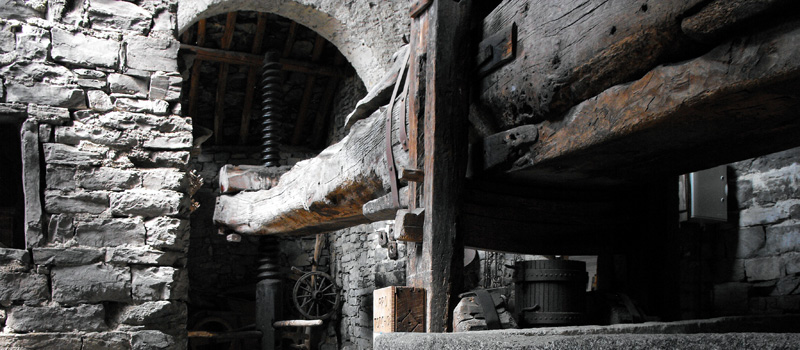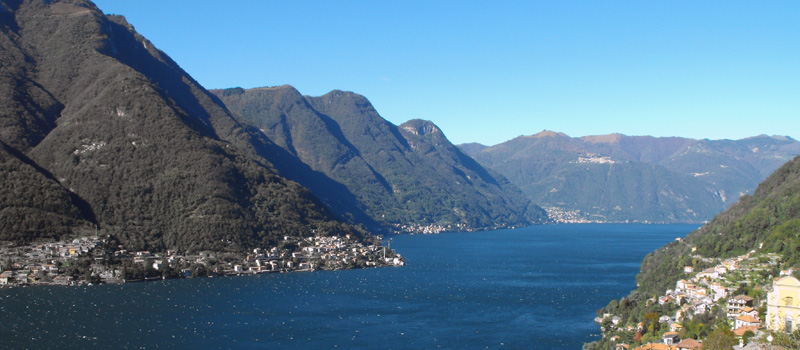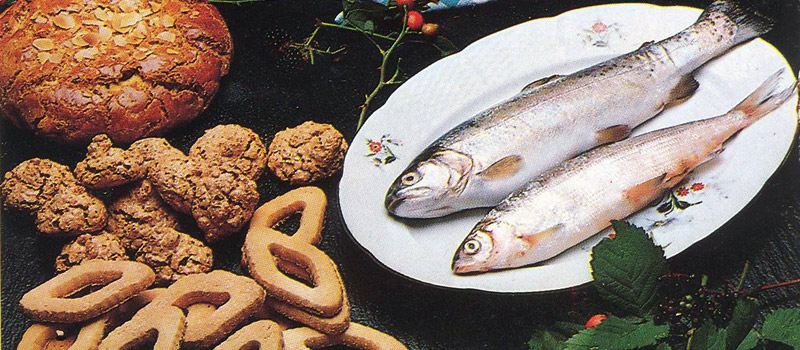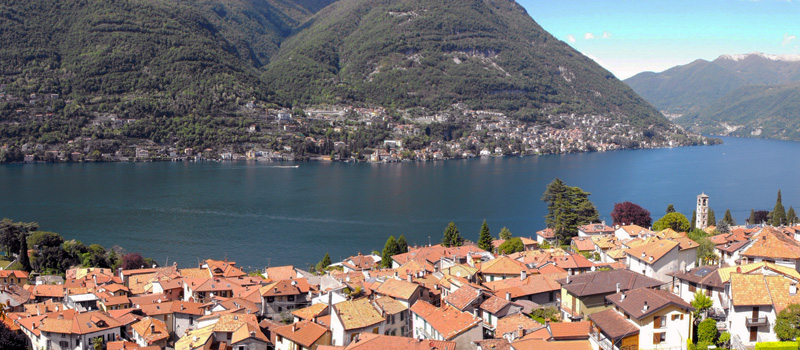
The Press is located in Faggeto Lario in the characteristic village of Palanzo, and is held inside an ancient stone cottage that is communal property. The Palanzo Press measures more than 12 meters long and 3 meters in circumference; the wooden screw which moves it is circa 6 meters tall. The year it was realized, 1572, is engraved on the support stone. The press is made of a single chestnut tree trunk, most likely from a tree cut down in the area. Its function is very simple. It is basically an enormous lever with one part attached to the ground and while the other part is moved by the infinite screw made of walnut: the clusters of grapes were placed between the two wooden platforms, then crushed. The must then flowed from the stone nozzle and was gathered into wooden barrels.
The press was used for centuries, even by farmers from bordering towns, mostly for pressing the grapes, but also for obtaining walnut oil. The pressure able to be placed is estimated to be various tons, thanks to the work of the infinite screw. The press, despite its size may be maneuvered by a single person. Following World War II, the Palanzo Press risked being torn down, and a square being built in its place; but the citizens opposed the project and the press remained. The press has been declared a national monument thanks to its exceptional characteristics, as well as good state of its conservation.
Currently it is only used for demonstrative purposes, during Palanzo's yearly Sagra del Torchio (Press Festival) in October - an entire day of music, entertainment, stands, tasting of local products, expositions of ancient trades and sales of handmade articles. La Press Festival began in 1975 and updated itself each year, thanks to the collaboration of the Amici del Torchio (Friends of the Press) association and the patronage of the Triangolo Lariano mountain community. For more information: tel. (+39) 031 378222 - Faggeto Lario Municipality.

Pognana Lario was once famous for its Moltrasio stone mines, this building stone, used by the Masters of Comacini, is characterized by gray-blue streaks. It's a must to visit the church of San Miro, situated in the hamlet of Rovasco.
Pognana Lario
Dried Shad (Agone), called Missoltini or Missultin, were at one time a precious food for inhabitants of Lake Como, the particular processing allowed them to be conserved for more than a year, excellent traditional Lake Como cuisine.
Lario Cuisine
Torno is situated upon a headland, from where it looks down over the south-western end of lake Como. Traces of pre-Roman settlements have been found in the area, as evidenced by the discovery of Massi Avelli to Piazzaga.
Torno